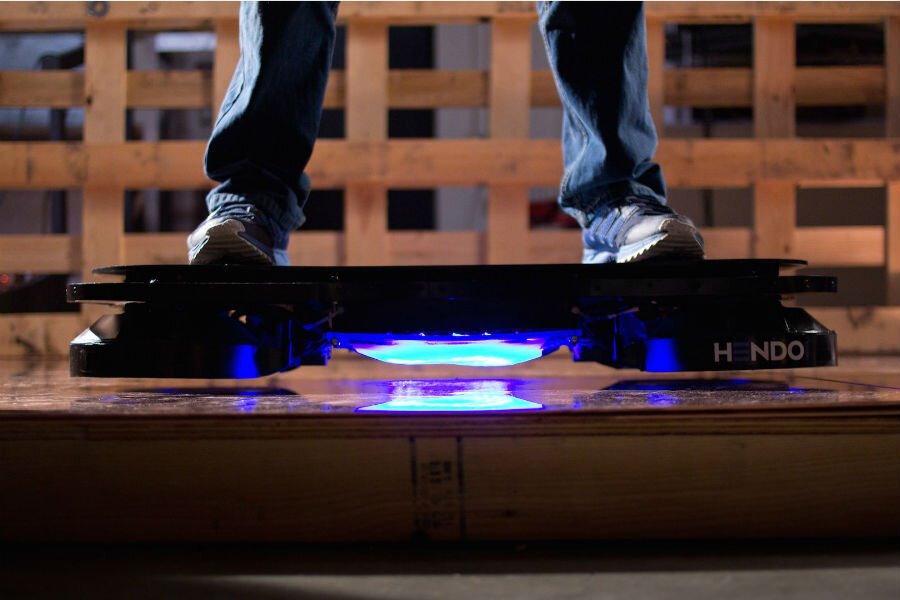Lexus to unveil hoverboard. How does it work?
Loading...
Disappointed by the transportation options in 2015? Next week, Lexus will demonstrate its hoverboard, called the Slide, which the luxury automaker has reportedly been developing with teams in London and Germany for the past 18 months.
A teaser video released in late June was 37 seconds of hoverboard hype: the wheel-less, bamboo-topped skateboard drifts frictionlessly about two inches above a smooth surface, in what appears to be a skate park. In a second video, professional skateboarder Ross McGouran can be seen putting the board down, and just as he is about to hop on ... the video cuts away. The Slide is part of Lexus's so-called "Amazing in Motion" series, which also includes futuristic light-up suits and drones made with 3-D printers. The company's hoverboard is still mysterious.
According to Lexus, the Slide lifts from the ground using superconductors and magnets, which together work against the force of gravity to create lift. The superconductor is the primary difference from another hoverboard, called Hendo, that made headlines and was backed on Kickstarter last year. According to Wired, Slide's superconductor creates a different magnetic field from the one Hendo generates, using what non-scientists might think of as a regular magnet. Still, because both Slide and Hendo use magnets, they can skate only on special metallic surfaces, a fact Lexus recently acknowledged in a statement to Gizmodo, which also reports that a professional skateboarder has been testing the Slide in Barcelona.
“With a superconductor you don’t need to have an oscillating magnetic field [like Hendo’s],” said Eric Palm, Deputy Laboratory Director at FSU’s National High Magnetic Field Laboratory in an interview with Wired. “Instead you have something called the Meissner effect, which essentially says that when you take a magnetic field near the superconductor, it induces current in that superconductor, and creates essentially an image magnetic field on the other side of the superconductor. You create current, but since it’s a superconductor, the currents don’t die away. So you don’t need oscillating magnetic fields. You can have a magnet that levitates above a superconductor or vice versa, a superconductor that levitates above a magnet.”
The superconductor generates heat, and that explains the vapor pouring out of the hoverboard in the video, which looks like a special effect. That is the liquid nitrogen, which Mr. Palm tells Wired is -321 degrees. He cautions that it’s not quite as extreme as it sounds. “That sounds very cold,” Palm says, “but liquid nitrogen is actually a byproduct of the steel industry, so it’s pretty inexpensive.”
The liquid nitrogen acts as a coolant, so when it runs out, the superconductors heat back up and the hoverboard is grounded until it gets filled up with liquid nitrogen again.
Though it is not difficult to use magnets to make objects float off the ground, something laboratories have been endeavoring to do long before Back to the Future II premiered in 1989, a reporter from The Verge found that, when he tried the Hendo at the company lab, it was nearly impossible to steer. A reporter for The New York Times says of his Hendo test drive: "No, I didn't feel like Marty McFly," referencing the Back to the Future character.
Next Wednesday, the biggest news from Lexus may not be the Slide itself, but whether or not the car company can put an actual driver on the hoverboard.








